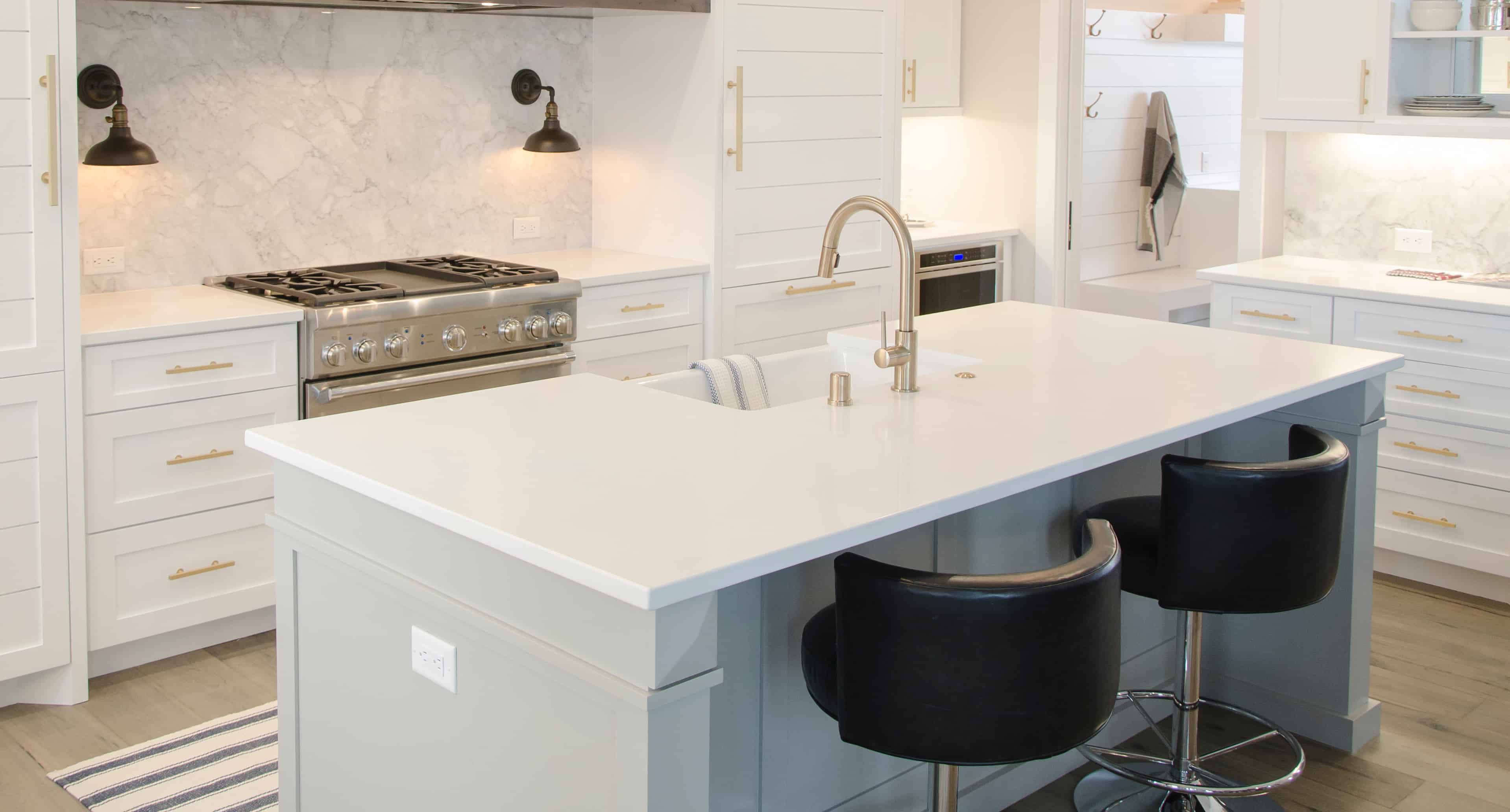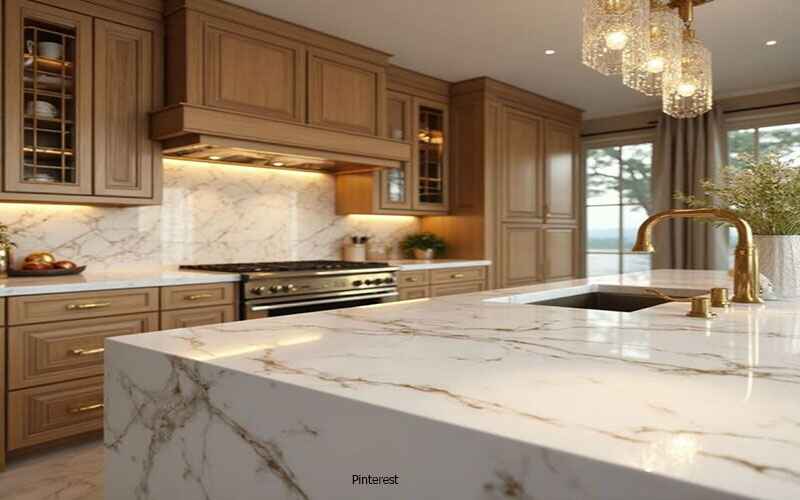Things to Consider for Kitchen Backsplashes
The backsplash looks out between your cabinetry and counters. However, its significance shouldn't be misjudged. It can fill in as a downplayed unifier or capture everyone's attention from the sink and cooktop. Eventually, that backsplash is a point of convergence. Furthermore, it's a chance to be innovative. It can fill in as a downplayed unifier or capture everyone's attention from the sink and stove cooktop. All things considered, the excellence of a Kitchen backsplash is subjective, depending on each person's preferences. A backsplash is a significant plan component in your kitchen, and it is the ideal method for adding a fly of shading to your cooking space. You might have a few inquiries to you: which materials to utilize, what plans to go for, etc. Indeed, we take care of you.

A tile backsplash has a tremendous
impact on ornamental space. With so many covering choices, styles, and
backsplash plans to browse, you can choose a tile that matches your plan style
and shading plan impeccably—or you
can blend and coordinate with a differentiating shading range! Irrespective of
whether you select to say something with your backsplash or pick a more
inconspicuous methodology, you'll benefit from adding an earthenware tile
backsplash to your kitchen.
Your kitchen is an advert for you to
free and attempt new plans. In addition to the fact that you end up having
beautiful treats later, all that baking and cooking, you typically end up with
a wreck too! Assuming you coincidentally sprinkle pureed tomatoes or one more
fixing all around the backsplash (we've all been there!), you know the feeling
of fury you feel about the wreck. Fortunately, with a tile backsplash, there is no convincing reason to worry
since it's stain-safe—all you want is some paper towels and warm water, and
your backsplash will be all-around great!
What is a Kitchen
Backsplash, and Why Do You Need One?
A kitchen backsplash covers the divider space between the kitchen countertops and the upper cupboards. Given the fixings utilized in cooking, this small yet significant space has a high shot at getting stained with spills and oil, and this could leave unattractive, complex imprints that will not go off without any problem. Henceforth you want to cover the region with a material that is not difficult to clean and looks great.

Advantages of Backsplash
· The fundamental advantages of introducing a kitchen backsplash are that it:
- Ensures the divider region between the ledge and kitchen cupboard.
- Makes for a striking visual component in the measured kitchen, in this manner upgrading the vibe of the space.
- Offers protection from substances that sprinkle on it during cooking.
- Is tough and can be effectively cleaned and cleaned.
The most effective method
to Choose a Kitchen Backsplash
Pick a material depending on its toughness, tasteful allure, and upkeep needs. Pick the shadings and materials, remembering the general look of your kitchen. Ensure it works out well for the cupboards, divider tone, and different accents. Remember to think about the complete expense and simplicity of establishment too.
Materials
Artistic tiles are the most well-known kitchen backsplash material. In any case, you might think about what material would you be able to use rather than tiles? Here are the other well-known choices:
- Rather than plain artistic tiles, you can utilize finished and designed ones. You can organize them in intriguing examples. You can likewise put the tiles approaching the roof to make the kitchen look greater.
- Look at tiles in materials, for example, earthenware tiles and other high-quality choices.
- Designed stone and standard stone, particularly marble and rock, are excellent choices. Soapstone, sandstone, and record are others you could pick from.
- Choose hardened steel, copper, or other metallic backsplashes for smooth, current energy.
- Glass is ideal for tiny kitchens that hate a lot of normal light. You can pick finished, glazed, back-painted, or hued glass squares or glass tiles.
1. Size up the space
Increase the width by the stature of the divider to decide the area, which will let you know how much material you'll require. Represent an additional 10 percent of tile as a sanity check.
2. Know the central
focuses
The eye is generally attracted to two regions in the kitchen – the space over the reach or the sink. Those are the spots to think of elaborate plans.
3. More will be more
Stretch out the backsplash tiling to fold over the room for a contemporary look. While it will add to the discount, it's a visual stunt to grow the size of a bit of kitchen.
4. Respected tile
An older style tile is the most well-known material for backsplashes.
5. Thoroughly consider
mileage
Glass is lovely, however not spending plan well disposed. Regular stone is outwardly striking. However, it requires a refreshed fixing one time each year. Fired is sturdy, simple to perfect and minimal expense.

6. Boost with magnetics
Think about charged material. You can utilize it to store things sans racking to clear up counter space.
7. Blend (don't
coordinate) your plan
Playing matchy-matchy with your tile work brings about a deadened look - - also that it tends to be more costly, depending upon the shading you pick. Play with reciprocal tones to balance a range and play with designs by creating the tiles upward rather than on a level plane for a contemporary, stacked look.
8. Ceramic versus
porcelain
They seem to be comparable. However, one is shockingly more grounded. Both are produced using mud. However, porcelain is denser and, like this, more sturdy against harm and more impervious to dampness.
9. Get it done
Distinctive tile materials have diverse fixing needs. Regular tile like stone, marble, and record should be resealed once per year, while travertine needs resealing like clockwork.
10. Put resources into excellent
grout
Remember this while planning shading,
and example patterns travel every way. However, the grout is the foundation of
your backsplash. a year, while travertine needs resealing at regular intervals.
If you want to
renovate your kitchen with backsplashes, you can contact us. We at ASASA Kitchen is providing complete Kitchen renovation services for the last 10 years in
Toronto GTA.






